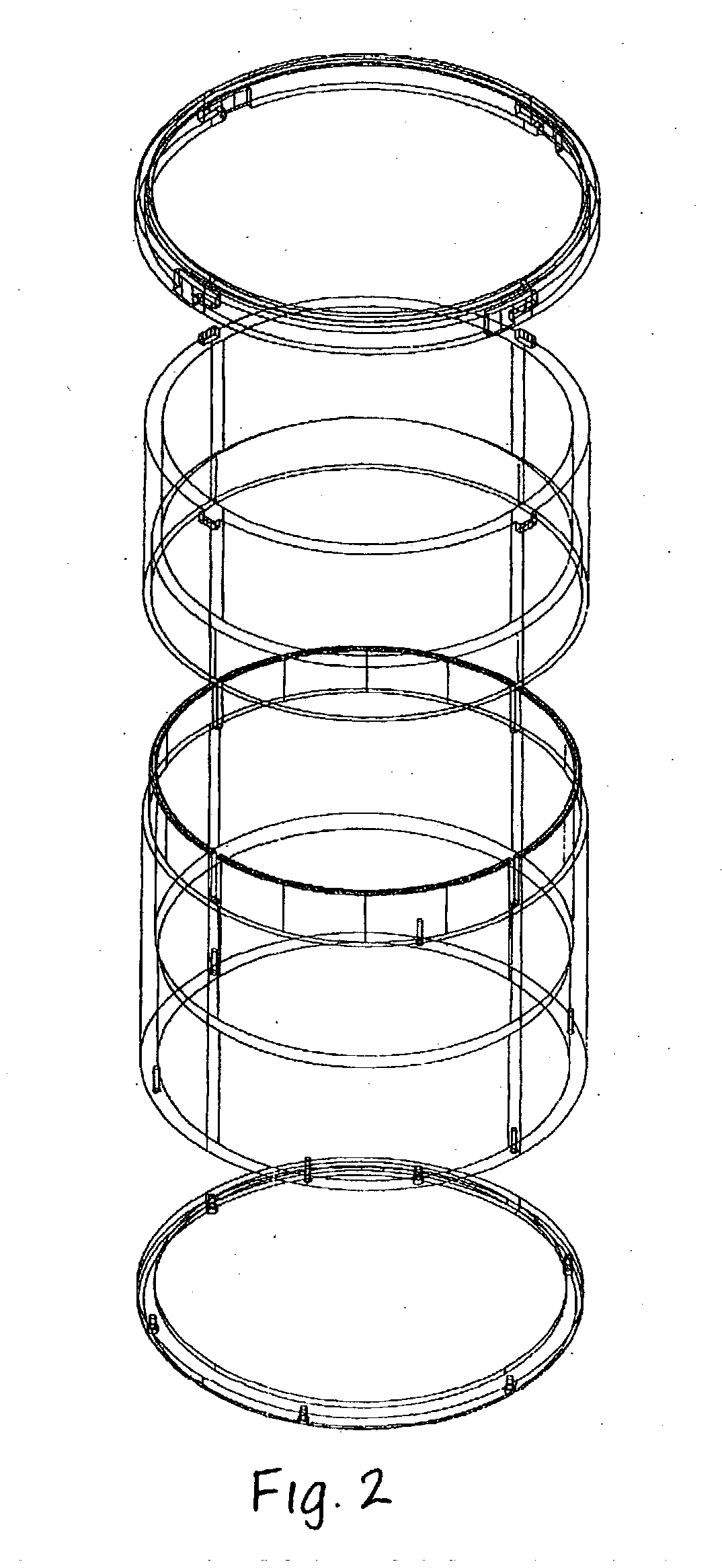Methods and apparatus for cleaning a hearing aid device
- Summary
- Abstract
- Description
- Claims
- Application Information
AI Technical Summary
Benefits of technology
Problems solved by technology
Method used
Image
Examples
example 1
Prototype Hearing Aid Cleaner Apparatus
[0076] A hearing aid cleaner apparatus as described above was constructed (see FIGS. 1-4). The prototype was prepared from ABS plastic, with a clear acrylic or Lucite window over the desiccant chamber to allow visual assay of the desiccant material.
[0077] The overall apparatus was cylinder-shaped, with a 3.25 inch outer diameter, a 3 inch inner diameter, and 3.75 inches in height (about the size of a typical coffee cup). Each of the heater compartment, HAD compartment, and desiccant compartment were about 1 inch in height. The HAD compartment was positioned over the heater compartment, and the desiccant compartment was positioned over the HAD compartment. Each compartment was machined to have a press / frictional fit with each other.
[0078] The desiccant compartment contained three receptacles for holding desiccant material. Three 2 gram canisters of CAN Sorb-It silica gel desiccant (commercially available from Sud-Chemie Performance Packaging, Al...
example 2
Use of the Hearing Aid Cleaner Apparatus
[0080] The apparatus of Example 1 was used to clean a hearing aid device. The control timer was set to have eight cycles of heating and cooling. The heating phase lasted 20-30 minutes, and the temperature of the HAD compartment reached about 100-130.degree. F. (38-54.degree. C.). The control timer was not set to reach a specific temperature in the HAD compartment, although temperature control equipment could be readily installed (e.g. a thermostat or thermocouple). The cooling phase lasted about 40 minutes, and allowed the apparatus to return to room temperature. The prototype was not equipped with an active cooling mechanism, although one could be attached.
[0081] It is envisioned that the cycles of heating and cooling could readily be performed overnight while the user is asleep (the total cycle time is about eight hours).
PUM
 Login to View More
Login to View More Abstract
Description
Claims
Application Information
 Login to View More
Login to View More - R&D
- Intellectual Property
- Life Sciences
- Materials
- Tech Scout
- Unparalleled Data Quality
- Higher Quality Content
- 60% Fewer Hallucinations
Browse by: Latest US Patents, China's latest patents, Technical Efficacy Thesaurus, Application Domain, Technology Topic, Popular Technical Reports.
© 2025 PatSnap. All rights reserved.Legal|Privacy policy|Modern Slavery Act Transparency Statement|Sitemap|About US| Contact US: help@patsnap.com



